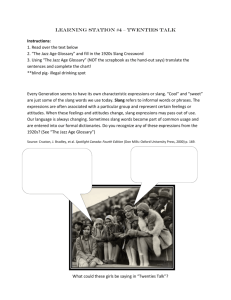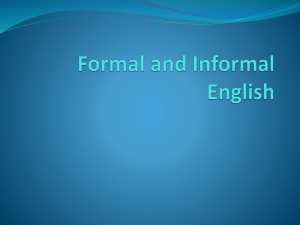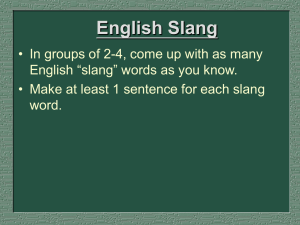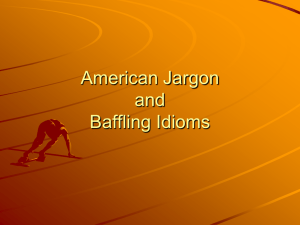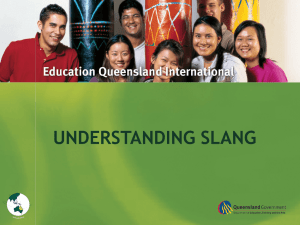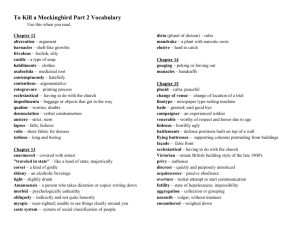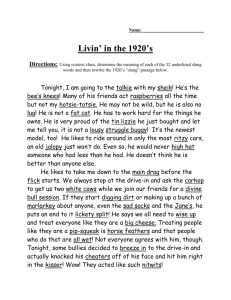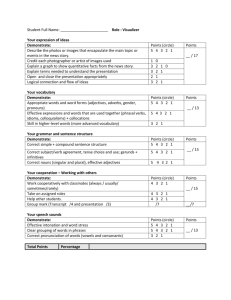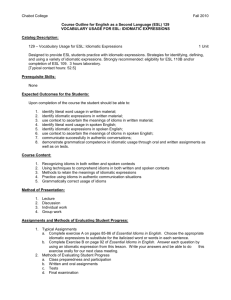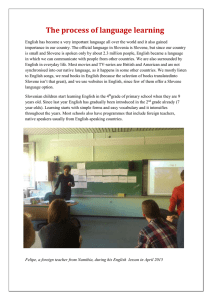Colloquial language and slang Teachers: Filipe de Almeida (ANG
advertisement
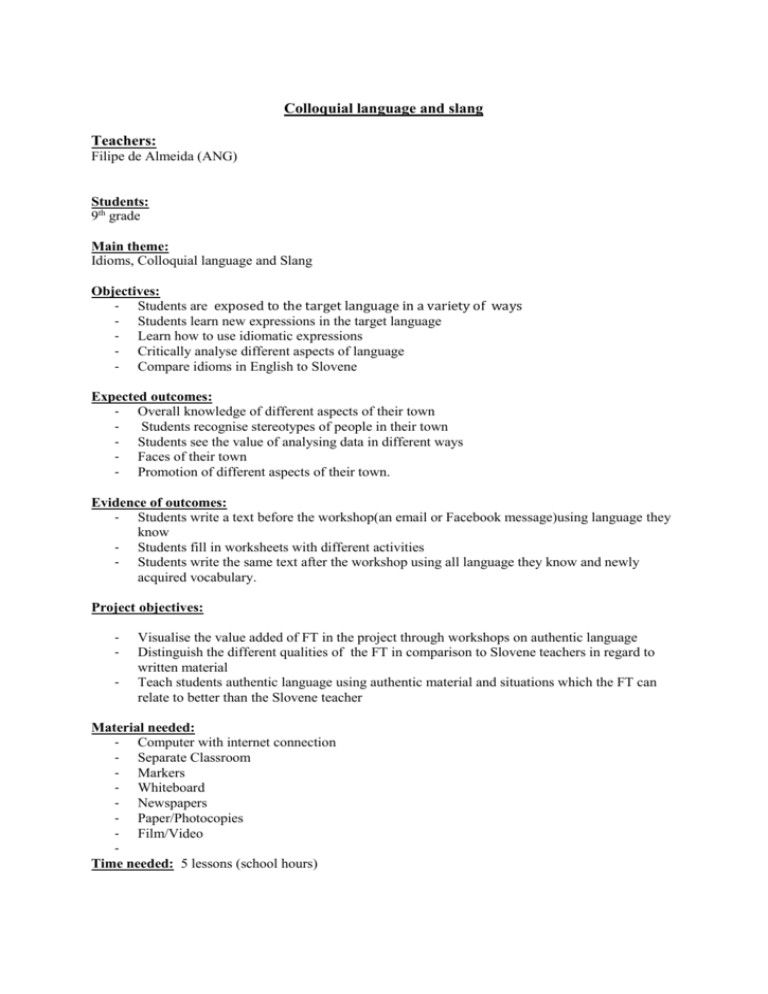
Colloquial language and slang Teachers: Filipe de Almeida (ANG) Students: 9th grade Main theme: Idioms, Colloquial language and Slang Objectives: - Students are exposed to the target language in a variety of ways - Students learn new expressions in the target language - Learn how to use idiomatic expressions - Critically analyse different aspects of language - Compare idioms in English to Slovene Expected outcomes: - Overall knowledge of different aspects of their town Students recognise stereotypes of people in their town - Students see the value of analysing data in different ways - Faces of their town - Promotion of different aspects of their town. Evidence of outcomes: - Students write a text before the workshop(an email or Facebook message)using language they know - Students fill in worksheets with different activities - Students write the same text after the workshop using all language they know and newly acquired vocabulary. Project objectives: - Visualise the value added of FT in the project through workshops on authentic language Distinguish the different qualities of the FT in comparison to Slovene teachers in regard to written material Teach students authentic language using authentic material and situations which the FT can relate to better than the Slovene teacher Material needed: - Computer with internet connection - Separate Classroom - Markers - Whiteboard - Newspapers - Paper/Photocopies - Film/Video Time needed: 5 lessons (school hours) Lesson 1: - Students are divided into two groups( each group has 13 students) Students are asked to write a text to a friend (either a Facebook message or e-mail) using as many adjectives and creative language that they know. Students are encouraged to use the vocabulary they would normally use if they were writing the text in reality. The students should write numbers on their papers instead of their names before handing in their texts. This way the material is anonymous and the teachers chosen to look over the texts won’t be biased. Once the texts are handed in the FT informs students that they are going to participate in a workshop related to Idioms, Colloquial language and Slang and students get information on the workshop. Lesson 2: Teacher prepares a PowerPoint with billboard advertisements from around the world with idiomatic expressions. Teacher guides students to comment the different slides and get their feedback on how they relate the image with the idiomatic expression and the product. The students are also encouraged to analyse the intercultural aspect of the advertisements. Are they easily understood or would they change anything for their own culture. Students are encouraged to discuss and compare with billboards in Slovenia. By looking at the advertisements in critical way students learn to see more than just the product but they also analyse the language and see how it is associated to the cultural background of the country. Lesson 3: Teacher screens clips cut up from a film which portray how idiomatic expressions are linked to culture and how their usage can lead to miscommunication if you do not understand the culture present. The film is American but its set in India and shows the differences in language and culture. Students get a worksheet with the different idioms and they view each clip and try to interpret the situations both on a language as well as cultural level. This workshop is interesting as it contrasts western culture vs. east and can be used to help students see authentic language in film and at the same time learn about different cultural habits. Students are guided to think critically about each situation and compare it to their reality in Slovenia. How would the expressions play out in their reality, and students are encouraged to toy with these situations to learn broader cultural issues. Lesson 4: The teacher brings in a newspaper article on British slang as well as a video which accompanies the text. Students first listen to a group of British teenagers their age having a conversation. Due to the fact that the teenagers (UK) use very specific slang related to their region the audio track is almost impossible for most students to understand. They then view the conversation with an image and subtitles which help decode the message. Guided by the teacher we analyse some of the language used to understand how it relates to the conversation. By putting the language into its context students may be able to decode the authentic language. The students then get a translation activity to do in class. The teacher writes a simple English sentence on the whiteboard and asks the students to do 3 different translations of the sentence for homework: 1. A translation into “correct Slovene”, 2. A translation into slang/colloquial language (Slovene) and 3. A translation into the slang they use with their friends(inclusion of swearwords ).
